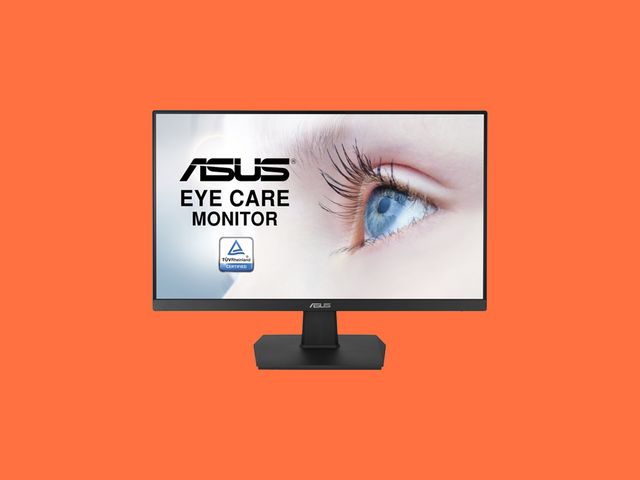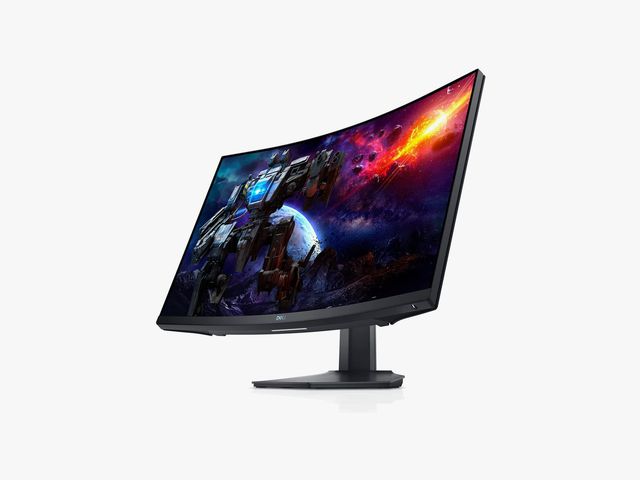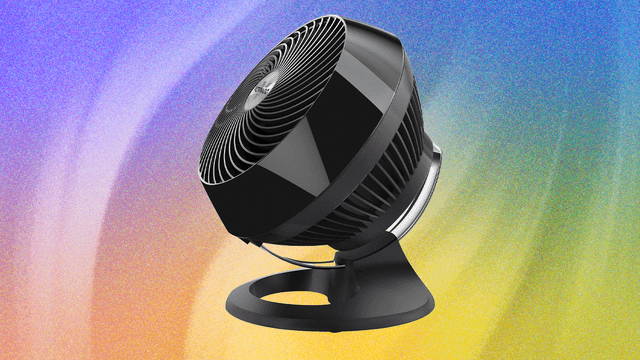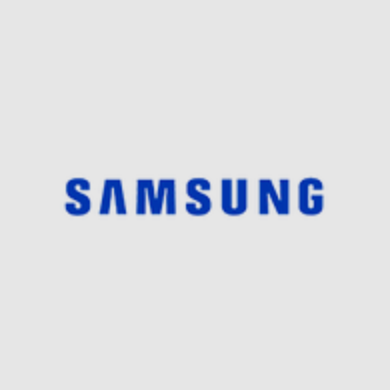The Best Computer Monitors to Upgrade Your Desk Setup
All products featured on WIRED are independently selected by our editors. However, we may receive compensation from retailers and/or from purchases of products through these links. Learn more.
Featured in this article
You might not think about your monitor too much, but whether you're working or gaming, that array of pixels blasting light at your face is important. The best computer monitors can vastly improve your productivity if you're working off a laptop, and a dual display setup can take things further. It can also make your games or movies look much, much nicer (or much worse). The folks on the WIRED Gear team use these large external screens every day in a variety of arrangements as we write our reviews, and naturally, we decided to review them too.
These are our favorite computer monitors of the many we've tested so far. There are hundreds of different kinds of PC monitors out there, so we're continually testing and updating this guide. You'll also find monitor buying advice that explains any jargon you might not know.
Be sure to check out other home office guides, including the Best Gaming Monitors, Best Home Office Gear, Best Laptops, and Best USB Hubs.
Updated September 2025: We've added the Dell 27 Plus 4K.
Compare Top 10 Monitors
| Product | Size | Type | Resolution | Refresh Rate | Speakers | USB Hub | Vertical Adjustability |
|---|---|---|---|---|---|---|---|
| Dell 27 Plus 4K (S2725QS) | 27 inch | IPS | 4K | 120 Hz | Yes | No | 5.1 inches |
| BenQ 27-Inch IPS Monitor (GW2786TC) | 27 inch | IPS | 1080p | 100 Hz | Yes | Yes | 5.1 inches |
| Dell 32 Plus QD-OLED (S3225QC) | 32 inch | OLED | 4K | 120 Hz | Yes | No | 4.3 inches |
| Asus 24-Inch Full HD Monitor (VA24EHE) | 24 inch | IPS | 1080p | 75 Hz | No | No | None |
| AOC QD-OLED Gaming Monitor (Q27G4ZD) | 27 inch | OLED | 1440p | 240 Hz | No | Yes | 5.1 inches |
| Dell 27-Inch Curved Gaming Monitor (S2722DGM) | 27 inch | LCD | 1440p | 165 Hz | No | No | 3.9 inches |
| Dell 32-Inch UltraSharp Thunderbolt (U3225Q) | 32 inch | IPS Black | 4K | 120 Hz | No | Yes | 5.9 inches |
| BenQ 4K Programming Monitor (RD280UA) | 27/32 inch | IPS | 4K | 60 Hz | Yes | Yes | 5.9 inches |
| Samsung M9 Smart Monitor (M90SF) | 32 inch | OLED | 4K | 120 Hz | Yes | Yes | 4.7 inches |
| MSI MAG QD-OLED Gaming Monitor (341CQP) | 34 inch | OLED | 1440p (Ultrawide) | 175 Hz | No | Yes | 3.9 inches |
| Plugable USB-C Portable Monitor | 15.6 inch | IPS | 1080p | 60 Hz | No | No | No |
Other Good Monitors to Consider
We think the screens above are better buys, but these are some other good models we've tested that do the job just fine.
Samsung Odyssey 3D Gaming Monitor for $1,700: If you want something truly next-generation, look no further than this glasses-free 3D gaming monitor. The Odyssey 3D (7/10, WIRED Recommends). Like trying VR for the first time, everyone needs to play a game in 3D at some point. Samsung even throws in some AI-enhanced conversion into 3D, a feature that could truly bolster this technology in the future. Game support remains problematically limited, but Samsung has plans to fix that soon.
BenQ 27-Inch IPS Monitor for $170: Reviews editor Julian Chokkattu bought and paired this monitor with his MacBook and says it works well and has nice colors. The large 27-inch screen paired with the 1080-pixel resolution means things can look a little fuzzy if you sit too close to the monitor, but it's fine at normal viewing distances. It supports the VESA mounting standard.
LG MyView 32-inch Smart Monitor for $600: Smart monitors are more or less a marriage of smart TVs and traditional computer monitors. It sounds a little unnecessary, but after testing the LG MyView Smart Monitor (7/10, WIRED Recommends), I was sold. If you love to watch shows and movies at your desk or only have room for either a monitor or a television, this is the best of both worlds. It's a 4K monitor with both HDMI and USB-C inputs, and you can switch between the WebOS-powered interface—the same found on most LG TVs, with all your favorite apps—or your PC input so you can play games or get work done.
HP VH240A 24-Inch IPS Monitor for $288: The stand on this monitor lets you rotate the screen into a portrait orientation, making it a nice, hassle-free second monitor (you can VESA mount it too). WIRED editor Julian Chokkattu says he bought it for his partner in 2020 and it's been going strong ever since, with a sharp 1080-pixel resolution and slim bezels. Just don't bother with the built-in speakers, as they don't sound great (as is the case with most built-in speakers).
BenQ 27-Inch QHD HDR Monitor for $370: This is a good option for creative professionals who don't need a 4K screen and want great color accuracy. WIRED senior editor Michael Calore says the 2K-resolution display is gorgeous, with highly accurate color reproduction.
ViewSonic XG272 27-Inch 2K OLED Gaming Monitor for $950: The ViewSonic XG272 (7/10, WIRED Review) is a bright and beautiful 2K OLED screen with an impressive 240-Hz refresh rate. The monitor controls could be better, though.
BenQ PD3225U 4K IPS Monitor for $1,100: This 4K monitor is made for Macs with its M-book mode that instantly matches the connected Mac's colors, and has a ton of screen settings you can access with the little puck remote. It's a beautiful 32-inch screen, and adjusting it up or down or to the side feels super smooth. It's on the pricey end, though, and there are plenty of cheaper options that do a similar job.
What Monitor Size Is Best?
Size is often the first and most important decision to make about your monitor. These are the most common sizes you'll come across, always measured diagonally across the screen. The following range from most common to least, and include different aspect ratios and resolutions that are often used at that size.
27 inch: This size has become the standard, offering enough screen size without overtaking your desk or stretching out the pixels too much at 1080p. If you're unsure of what to get, start here.
32 inch: The next most popular size, giving you that bit of extra screen real estate for multitasking. You'll just want to make sure your monitor has at least a 1440p resolution to keep the pixel density high enough. If 32 inches isn't big enough, there are even 40-inch or 43-inch monitors in the conventional 16:9 aspect ratio, though you'll really want to make sure you have a big enough desk for one of these.
34 inch: Curved, ultrawide monitors with a 21:9 aspect ratio and 34-inch screen size used to be odd, but these days, they've become an alternative to using two 27-inch screens.
24 inch: This smaller size has become less popular over the years, and I only recommend it if you're trying to squeeze a monitor onto a smaller desk or are a professional esports gamer.
There are other outliers, such as the absurd 49-inch, 32:9 behemoths, known as “super ultrawide” monitors, or 16-inch portable monitors that are meant to pair with your laptop.
What Should You Look for in a Monitor?
Once you've decided on a size, there are a number of other important aspects of your next monitor to consider. Some of these factors may matter more for certain uses—for example, gamers generally care more about higher frame rates than office workers do—but they're all handy to know going in.
Resolution: The bigger the monitor, the more it will benefit from higher resolutions. That will allow you to have app windows that take up less space but are still legible. Most monitors today are typically 1080p (1,920 x 1,080), 1440p (2,560 x 1,440), 4K (3,840 x 2,160), or even 5K (5,120 x 2,160).
Refresh rate: This refers to how many times the display can refresh the picture per second, measured in hertz (or Hz). A higher refresh rate makes all movement and animation look smoother because you're seeing more information. For productivity, 60 Hz is probably enough, but gamers will generally want a panel that can at least hit 120 or 144 Hz. 240 Hz has become the new standard for high-end gaming monitors, but there are now extreme models that go up to 500 Hz and beyond. You'll need a powerful enough computer that can maintain a high frame rate to take advantage of these high refresh rates, and you usually have to enable this feature in your operating system's display settings.
Panel type: Monitors usually have a type of LCD (liquid-crystal display) panel. Three of the most popular options—twisted nematic (TN), vertical alignment (VA), and in-plane switching (IPS)—are all different types of LCD panels, and all use TFT (thin-film-transistor) technology too. Each is popular for different reasons: IPS for color, VA for contrast, and TN for speed with higher refresh rates and response times. IPS has become especially popular thanks to its growing refresh rate speeds. Mini-LED uses a more advanced backlighting solution that uses a number of lighting zones to more accurately and efficiently control pixels. These tend to be the brightest monitors you can buy. OLED (organic light-emitting diode) panels take that even further, allowing the monitor to control individual pixels, including turning them off entirely to create extreme contrast. These are becoming highly popular in gaming monitors, in particular. You should think about what's most important to you (great color? thin form factor? max brightness?) to choose the best panel type for your needs.
Nvidia G-Sync/AMD FreeSync support: A gamer-specific criteria, these two features let monitors adjust their frame rates based on the games they're playing. This reduces screen tearing without affecting performance. G-Sync is made by Nvidia and FreeSync comes from AMD, and while FreeSync monitors can usually work with most modern Nvidia graphics cards, G-Sync doesn't work with AMD cards, so make sure everything you have is compatible when buying.
HDR support: This isn't crucial for productivity, but if you watch a lot of media or play games, it's nice to have. Just like on TVs, HDR dramatically expands the range of colors a screen can reproduce, leading to more vivid pictures. Content still has to support HDR, but many sources do these days, so it's often worth springing for. You'll find lots of monitors that say they support HDR (such as DisplayHDR 400 certification), but in almost all cases, you'll need a Mini-LED or OLED screen to really get proper HDR.
Port availability: A crucial but easy-to-overlook factor is what kind of ports the monitor has for connecting your devices. Most typically come with one or two HDMI inputs, and a DisplayPort input, which will cover most needs, but it's always a good idea to check what your setup needs. More expensive monitors can function as USB hubs, letting you connect all your peripherals and accessories directly to your monitor. Conversely, check out our Best USB Hubs guide if you need to expand your computer's port options without paying for a more expensive monitor.
Built-in KVM switch: A KVM (Keyboard, Video, Mouse) switch is a device that helps you easily switch your monitor, keyboard, and mouse between two different computers or source inputs (like a gaming console). If you have one setup for both a work and personal computer, or a computer and gaming console, having a KVM switch built into the monitor means you can easily switch everything between your two devices without needing an external KVM switch.
Should You Worry About Burn-In on OLED Monitors?
Probably not. You'll see a lot of OLED monitors on the list below, and that's for good reason. They're the best monitors you can buy, and they're increasingly affordable. It's pretty incredible how quickly they've dropped in price.
But burn-in was always the biggest concern with the technology. After all, it's an inherent flaw with the panels, and it can't be erased once the damage is done. While it's still possible to see burn-in on your monitor over many years, it's just not as much of a justifiable fear as it used to be. Modern OLED panels are significantly better at reducing burn-in, and the latest year-long testing of burn-in is pretty promising. On top of that, most OLED monitor manufacturers now offer software protections that can help prevent damage and three-year warranties that include burn-in protection.
What Do You Need to Set Up Your Monitor?
Once you've picked out the best monitor for you, you'll need a way to set it up on your workstation. Most models come completely assembled or require you to connect the base to the stand and the stand to the back of the screen.
Monitor stands: The vast majority of monitors come with a stand (and sometimes a separate base), and the flexibility of these stands can go a long way toward reducing neck strain and/or back pain. Ideal stands let you adjust the height, tilt, and rotation of a screen so you can position it exactly where you need it. Higher-end models can even adjust orientation from landscape to portrait. If your monitor doesn't come with a height-adjustable stand, you may want to consider a monitor stand, which elevates the screen to a more ergonomically-sound height.
Mounting brackets: If you're using multiple monitors, connecting them to monitor arms is a good solution. Monitor arms clamp to the side of your desk and free up lots of space on your desk that would otherwise be taken up by stands. The type of mount the display uses is crucial, however. Most monitors and monitor arms use the VESA standard, though you'll want to double check. You should check the size and type of mount on the equipment you have before buying anything new.
Ports and cables: Once you have your monitor set up, you'll need to connect it to your PC or laptop using one of the available ports. If your computer has an HDMI port, it's as easy as using the HDMI cable that came with the monitor and connecting it to the back of the display. If your monitor has USB-C, that's also a good option, especially if your laptop doesn't have HDMI anyways. And lastly, you'll often get the fastest refresh rates if you use the DisplayPort and hook it directly into your desktop's graphics card.
Speakers: A lot of monitors come with built-in speakers, but I wouldn't put much stock into them. They usually sound poor and don't get very loud. You're much better off getting a dedicated set of desk speakers. Check out our Best Computer Speakers guide.
How Does WIRED Test Monitors?
We never recommend products we haven't tested, so we get these monitors in and set them up on our own desks in our own houses. We integrate them into our workspaces and get a feel for what it's like to use them. That means considering the ease of setup, adjustability, design, ports, and menu.
But you can't talk about the quality of a monitor without testing the quality of the panel. So, using a colorimeter, we report on and test the brightness, contrast, color saturation, and color accuracy. We compare that data to how other products we've tested, across different prices and use cases. That testing is especially important for displays that are designed to be used for specific tasks, such as content creation or gaming.
Our goal is to give our readers the best possible monitor recommendations, and to do that honestly, we have to test a lot of different displays. We're constantly getting in the latest and greatest displays to test directly from the biggest monitor manufacturers in the world. Like many of the other products we test, most often, these products are offered to us as review units with no promise of positive coverage. We do not prioritize products from companies that send us products to test. Though most of the products listed above were provided for review by the manufacturers, there are some exceptions in which products were purchased for personal use, which are noted.
Beyond that, I try to test monitors throughout the across the price spectrum and from as many different brands as possible.
Can You Use a TV As a Monitor?
Yes. Since TVs have HDMI ports, you can connect a laptop or PC directly to a television without a problem. In a pinch, it's a decent solution if you don't have a monitor. As TVs have increasingly become more similar to PC monitor, there's less and less of a problem with using them interchangeably.
However, there are lots of reasons why people don't typically do this too. The size of televisions is a problem for desk use. You probably wouldn't want to put anything larger than a 43-inch display on your desk for practical reasons, but even at that size, the pixel density can be a problem. If you're at a desk, you're likely sitting much closer to the screen than you would be in a living room, and you'll really notice those pixels when doing computer work, even if the TV is 4K. There are other concerns if you plan on playing games on your TV, such as the refresh rate or input delay.
How Do You Set Up Dual Monitors?
The simplest way to connect two monitors your laptop or PC is to just connect each using different ports and cables. For example, your display might have an HDMI port and a DisplayPort, which you can connect directly to your graphics card on the back of your desktop PC. That can be trickier with a laptop, which may not have all the ports you need to connect two displays. Some monitors and laptops have USB-C, allowing for an additional one to be connected. But Laptops like the M1, M2, or M3 MacBook Air, for example, can only support one external display on its own.
Fortunately, if your laptop doesn't have support for more displays, you can use a laptop docking station to add more monitor support. The other option is to daisy chain them together using USB-C that's at least Thunderbolt 3 (which includes Thunderbolt 4 or Thunderbolt 5) for both the laptop and the monitor. This lets you connect to two displays through just one cable coming out of your laptop.
Power up with unlimited access to WIRED. Get best-in-class reporting and exclusive subscriber content that's too important to ignore. Subscribe Today.

-Front-Reviewer-Photo-SOURCE-Nena-Farrell.png)








-Reviewer-Photo-SOURCE-Brad-Bourque.jpg)

-Reviewer-Photo-SOURCE-Luke-Larsen.jpg)
-Offwhite-Background-SOURCE-Amazon.jpg)


























